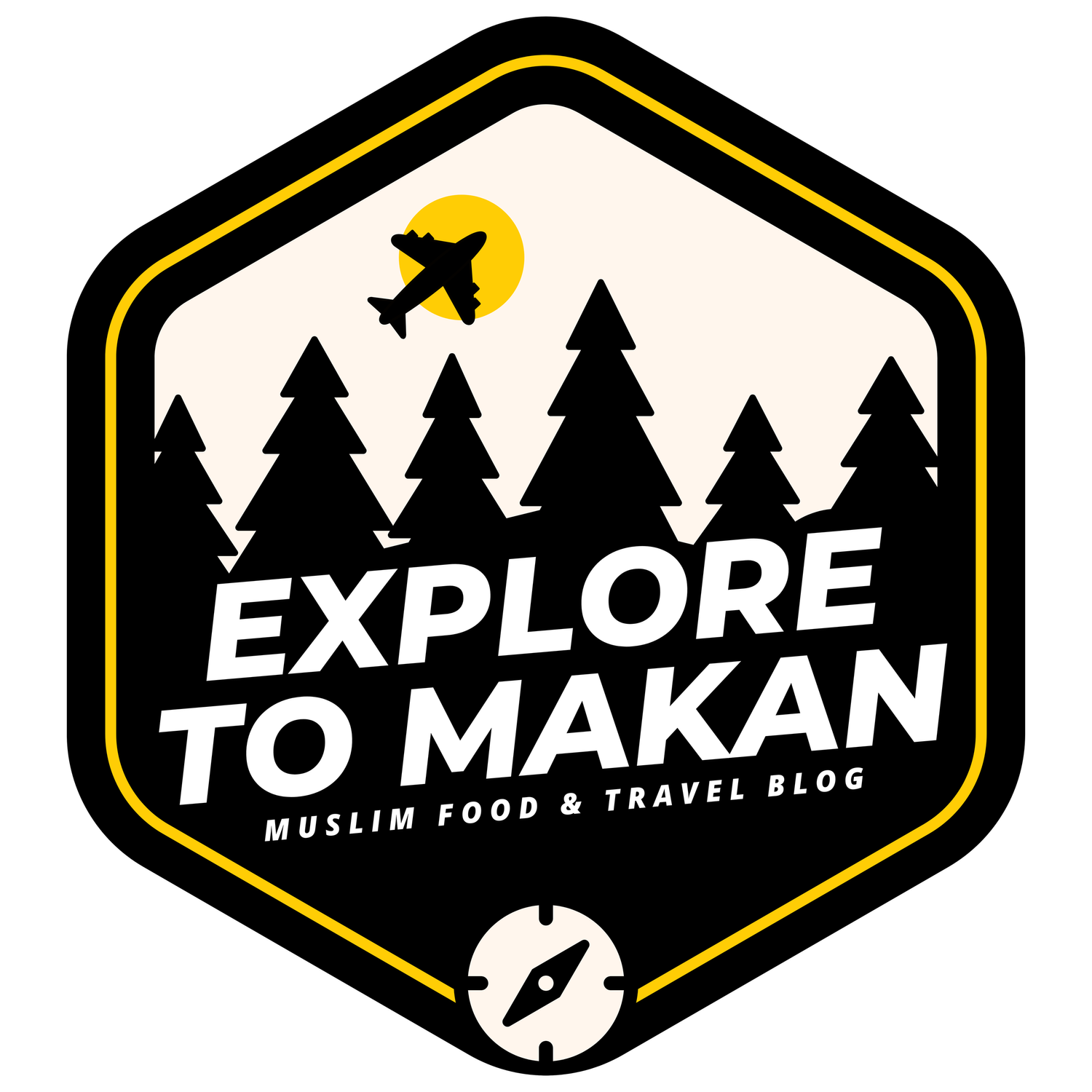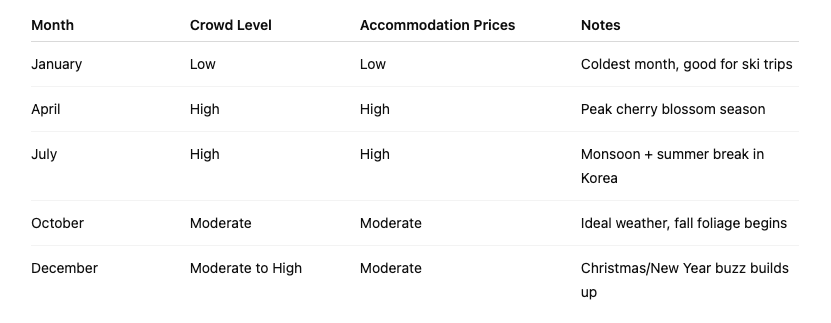When Is the Best Time to Visit South Korea?
South Korea is a country you can visit any time of the year—but the “best time” really depends on the kind of trip you want, and which part of the country you’re heading to. Are you only visiting Seoul or exploring other parts like Busan and Gyeonggi-do too? Are you here for spring cherry blossoms? Or are you dreaming of cozy winter vibes with snowfall and ski trips?
In this super detailed guide, I’ll walk you through:
The best months to visit Korea based on weather
Major festivals and cultural highlights throughout the year
What to expect in terms of crowds and travel costs
Tips for Muslim travelers (based on my own experience living here!)
Disclaimer: While I can share everything I’ve personally experienced, always check Google or local weather apps before you fly—I wasn’t expecting it to snow in mid-April, so anything can happen in Korea, really!
Strolling by the Han River in Seoul, South Korea
Best Time to Visit South Korea at a Glance
Season by Season Breakdown
Cherry Blossoms in Seoul, South Korea
🌸 Spring (March to May)
Weather:
Average temperatures: 5°C – 20°C
Clear skies, low rainfall
Why visit in spring:
Stunning cherry blossoms peak in late March to early April
Major spring festivals: Jinhae Cherry Blossom Festival, Yeouido Spring Flower Festival
Mild weather perfect for city walks, picnics, and hanbok rentals for palace visits
Things to consider:
Spring is the peak season so it can get pretty crowded, especially at tourist attractions.
Consider taking up a cherry blossoms tour that can bring you to multiple locations at once.
It’s a great time to pack picnic snacks—halal-friendly snacks like samgak-gimbap (vegetarian), seasonal fruits, and drinks from convenience stores are easy to find.
Best for: First-time visitors, couples, families
What to pack: Light jacket, layers, umbrella (occasional rain)
☀️ Summer (June to August)
Weather:
Average temperatures: 22°C – 35°C
Monsoon season (especially July): expect heavy rain and high humidity
Why visit in summer:
Popular beach escapes: Busan, Jeju, Sokcho
Big concerts and K-pop festivals
Fireworks and night markets in full swing
Things to consider:
Crowds increase, especially in August due to local holidays
Prices for accommodations spike in coastal cities like Busan and Sokcho
Look for halal restaurants with air-conditioning, and stay hydrated — there’s lots of convenience stores like CU and GS25 where you can get bottled drinks or some snacks!
Best for: K-pop fans, beach lovers, shopping trips (hello air-conditioned malls)
What to pack: Cooling towels, light clothes, sunscreen, portable fan
🍁 Autumn (September to November)
Weather:
Average temperatures: 10°C – 25°C
Low humidity, clear skies
Why visit in autumn:
Breathtaking fall foliage in mountains and parks (peaks late October to early November)
Major events: Seoul Lantern Festival, Andong Mask Dance Festival
Fewer tourists compared to spring and summer
Things to consider:
Autumn is also a peak travel period, so prices and crowd might increase.
Chuseok happens in October — read this article for tips when visiting during this public holiday.
Explore beyond Seoul for amazing foliage in places like Naejangsan, Seoraksan or Gyeongju
It’s a great time to cook your own meals at guesthouses or book accommodations near local markets.
Fresh produce is everywhere and it's a good season for vegetarian/vegan options.
Best for:
Photographers, outdoor lovers, solo travelers
❄️ Winter (December to February)
Weather:
Average temperatures: -10°C to 5°C
Snowfall common in January and February
Why visit in winter:
Ski resorts: Vivaldi Park, Yongpyong, Alpensia
Winter illuminations and Christmas markets (especially in Seoul and Busan)
Fewer crowds at palaces and cultural sites
Things to consider:
Lunar New Year (Seollal) usually falls between late January to mid-February. It’s a major local holiday so many shops and restaurants may close temporarily, but great for experiencing traditional culture.
Make use of heated indoor prayer spaces at major tourist spots like Incheon Airport, Nami Island, and Seoul Central Mosque.
Best for: Couples, snow lovers, budget travelers & shopaholics (post-holiday sales!)
Avoiding Crowds and Saving Money
So… When’s the Best Time?
If you're a first-time traveler: Late March to April or October to early November offer the best weather and scenery.
If you're chasing affordability: January and February are cheaper with fewer crowds.
If you're into festivals or cultural experiences:
April for cherry blossoms
October for traditional festivals
July for music lovers
Spring in Daegu, South Korea
Final Tips for 2025 Travelers
As much as I love sharing what I know based on my personal experiences living here in Korea, it’s also super important for you as a traveler to do your own research before your trip—especially when it comes to weather. Always check Google, local Korean weather apps, or even ask your accommodation for updates.
For example, I personally did not expect it to snow in the middle of April this year—but it did! So really, anything can happen. The seasons here are generally predictable, but the occasional surprise weather can definitely catch you off guard.
Check local event calendars ahead of time (festivals often shift dates slightly each year).
Use transport passes like the Korea Rail Pass (KR Pass) or T-Money for public transit.
Book accommodations near subway stations to save time and energy, especially in colder months.
Looking to Book Your Korea Trip?
If you’re planning your Korea adventure, don’t forget to use my Klook promo codes for discounted bookings on transport, attractions, SIM cards, and more:
𝗡𝗨𝗥𝗨𝗟𝗠𝗜𝗠𝗦𝗬𝗞𝗟𝗢𝗢𝗞 (for Malaysia)
𝗘𝗫𝗣𝗟𝗢𝗥𝗘𝗧𝗢𝗠𝗔𝗞𝗔𝗡𝗞𝗟𝗢𝗢𝗞 (for Singapore)








